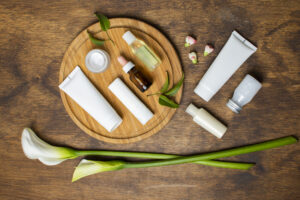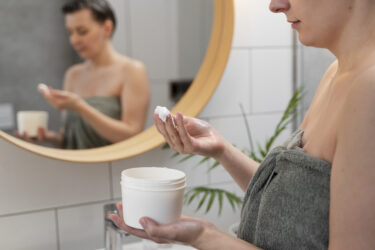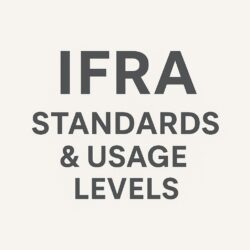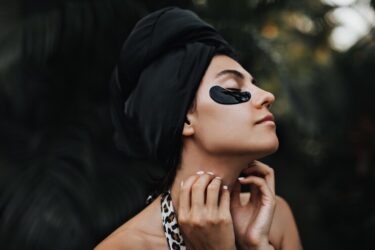The Evolving Landscape of Hair Conditioners
Rapid changes in consumer preferences, new ingredient developments, and a growing focus on sustainability are all influencing the hair conditioners market. In order to appeal to contemporary consumers, hair care brands are prioritizing efficacy, sensorial experience, and ethical sourcing, continuing to take cues from the skin care industry. As a result, a new generation of conditioners has been developed that offers benefits supported by science and does more than just detangle hair; they also hydrate, protect, and transform it.
Clean Beauty and Ingredient Transparency
Consumers today are better informed than ever before, and they want formulas that align with their values—clean, conscious, and clear. Because of this, formulators are shifting away from conventional conditioning agents that have fallen into disfavor.
Silicone-Free Movement:
Silicones, formerly valued for providing smoothness and luster, are being pushed aside by light, biodegradable versions like hemisqualane, coconut alkanes, and natural esters. These provide equivalent sensorial benefit without build-up or concerns to the environment. One such example is Emogreen L15, a popular silicone alternative derived from natural feedstocks, providing lightweight softness and excellent spreadability. An approach emphasized in Alibaba’s deep dive into conditioner innovation.
Sulfate and Paraben-Free:
Though sulfates are not common in conditioners, excluding them over a hair care regimen has become a selling point. Similarly, paraben-free products have become the norm as consumers wish to exclude inflammatory preservatives.
Functional Botanicals and Biotech Ingredients:
Ingredients like baobab protein, plant-derived ceramides, and biotech hyaluronic acid are enhancing performance in modern conditioners—many of which are influenced by regional traditions and heritage beauty trends making a global comeback.

The Rise of Hair “Skinification”
As the line between skin care and hair care continues to blur, many conditioners are now formulated with ingredients traditionally used for facial treatments.
Peptides:
Short-chain amino acid fragments renowned for their reparative function in skincare are increasingly storming the hair space. Copper peptides, to name one, are being researched for their potential to promote scalp health and strengthen hair at the follicle.
Hyaluronic Acid:
Already a household name in moisturizers, hyaluronic acid is becoming a staple in leave-in conditioners for its unparalleled ability to retain water—delivering hydration deep into the hair shaft and improving elasticity.
Niacinamide and Antioxidants:
Conditioners with vitamin B3 (niacinamide) and antioxidants such as vitamin E or green tea extract offer protection against environmental aggressors, including UV rays and pollution—factors that degrade hair strength over time.
Sensorial Innovation: Texture and Experience
Beyond functionality, the user experience remains a major differentiator in product development. Texture and scent are now central pillars in conditioner formulation.
Texture Redefined:
Brands are experimenting with unexpected formats such as:
Water-to-cream conditioners
Foaming leave-ins
Solid conditioner bars
Sorbet-like gels and melting balms
These new textures enhance usability and offer a moment of indulgence, bridging the gap between self-care and routine maintenance.
Fragrance as a Signature:
Scent is no longer an afterthought. It’s a crucial driver of brand loyalty, with consumers seeking elevated sensorial experiences that reflect their personal identity, as outlined in Allure’s report on 2025 hair care trends. Contemporary conditioners include multi-layered fragrance profiles with long-lasting wear, commonly developed in collaboration with fragrance houses. Ingredients such as amber, bergamot, and vanilla orchid are being utilized to create distinctive scent identities lasting well beyond rinsing.
Sustainability: Packaging and Sourcing
Sustainability is more than a trend—it’s a requirement. Hair conditioner brands are answering the call for environmental responsibility across every stage of product development.
Eco-Friendly Packaging:
Biodegradable tubes, aluminum bottles, and refill pouches are replacing traditional plastic containers. Additionally, waterless formats like solid conditioner bars reduce shipping weight and packaging waste.
Minimalist Design and Labeling:
Transparent labeling practices and minimalist aesthetics are gaining popularity. Clear callouts such as “vegan,” “cruelty-free,” and “97% natural origin” help consumers make quicker, value-aligned decisions at point of sale.
Ethical Sourcing:
Ingredient origin is becoming a prominent part of the storytelling. Ingredients like fair-trade shea butter, sustainably harvested algae, and upcycled fruit oils are being used to create high-performing, guilt-free formulations.
Market Growth and Segmentation
The worldwide hair conditioner market remains on an upward trend, driven by growing knowledge of the importance of hair health and the presence of specialized treatments.
Global Outlook:
According to IMARC’s 2025 global market research report, the hair conditioner market was valued at approximately USD 14.5 billion in 2024 and is projected to reach USD 24.9 billion by 2033, with a CAGR of over 6%. Growth is especially notable in Asia-Pacific and Latin America, where expanding middle-class populations are driving demand for premium hair care.
Consumer Segments in Focus:
Curly and Coily Hair Care:
Items specially designed for textured hair, particularly those with high water content and natural oils, are popular. Brands that sell curl-specific conditioners containing marula oil, castor oil, and rice protein are doing very well.Men’s Hair Conditioners:
This niche is expanding rapidly, with male consumers seeking multifunctional conditioners that support hair strength and reduce scalp irritation.Aging Hair Solutions:
Conditioners targeting thinning or graying hair are incorporating actives like Darkenyl™, Procapil™, and Caffeine. These address density, pigmentation, and resilience.
Claims, Compliance, and Consumer Expectations
Product claims are evolving alongside regulatory oversight. Brands must balance innovation with compliance across global markets.
Popular Claims:
Silicone-free
Dermatologist-tested
Scalp-balancing
Clinically proven results
24-hour hydration
Color-safe
Natural and Organic Certifications:
Labels like COSMOS, USDA Organic, and Ecocert are increasingly used to validate claims and build trust. Brands leveraging these certifications are seen as more credible, especially among conscious consumers.
Consumer Priorities:
Shoppers now prioritize:
Ingredient transparency
Visible results
Clean, cruelty-free sourcing
Affordable luxury
This convergence of values and performance sets a new benchmark for hair conditioners.
FAQs
1. What is the difference between a rinse-off and a leave-in conditioner?
Rinse-off conditioners are applied after shampooing and are meant to be washed out after a few minutes. They focus on detangling and surface conditioning.
Leave-in conditioners, on the other hand, are designed to remain on the hair, providing ongoing hydration, frizz control, and protection throughout the day. They’re especially useful for dry, damaged, or curly hair.
2. Why are so many conditioners now labeled “silicone-free”?
Consumers are becoming more concerned about long-term hair and scalp health, and some silicones have been criticized for building up on hair and being non-biodegradable. Silicone-free conditioners use alternatives like natural esters, hemisqualane, or plant oils, which offer similar softness and shine without buildup or environmental concerns.
3. Can I use conditioner without shampoo?
Yes, this is called co-washing (conditioner washing). It’s especially popular among people with textured or curly hair. However, while co-washing helps retain moisture, it may not completely remove buildup or excess oil. Many users alternate co-washing with a gentle or sulfate-free shampoo for balance.
4. Are natural conditioners as effective as synthetic ones?
Natural conditioners can be very effective, especially when formulated with modern bioactives like plant proteins, botanical extracts, and fermented ingredients. The performance depends on the formulation quality, not just the natural origin. Many brands now combine nature and science to create high-performance, clean conditioners.
5. How do I choose the right conditioner for my hair type?
Start by identifying your hair type and concern:
Dry or damaged hair: Look for deep hydration and protein-rich formulas (e.g., with shea butter, argan oil, keratin).
Oily scalp: Choose lightweight, scalp-balancing conditioners (e.g., with green tea, niacinamide).
Curly or coily hair: Use rich, nourishing conditioners with slip and moisture (e.g., with castor oil, aloe vera).
Color-treated hair: Opt for color-safe, sulfate-free conditioners with UV protection.
Reading the ingredient list and understanding your hair’s needs is the best way to make an informed choice.
Looking Ahead
As 2025 progresses, the hair conditioner business is at a crossroads of science, sustainability, and sensoriality. Innovative brands are not only fulfilling consumer demands—they‘re raising the bar by thinking differently about what a conditioner can be.
Formulators who take advantage of multi-functional ingredients, clean-labeling, and considered sensory design are better placed to differentiate themselves in a crowded marketplace. Furthermore, those who incorporate sustainability at every stage—from raw materials to refillable packaging—are more likely to build long-term consumer commitment.


